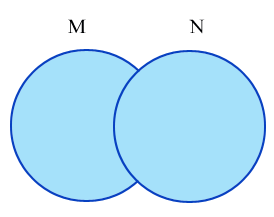

For example, you can filter them differently using different WHERE clauses. All rows of the UNION result set must be in the result set of at least one of its SELECT statements. Since you are writing two separate SELECT statements, you can treat them differently before appending. This is because most of the instances in which you'd want to use UNION involve stitching together different parts of the same dataset (as is the case here). While the column names don't necessarily have to be the same, you will find that they typically are. The columns must have the same data types in the same order as the first table.Both tables must have the same number of columns.In this particular case, there are no duplicate rows, so UNION ALL will produce the same results: SELECT * You'll likely use UNION ALL far more often than UNION. If you'd like to append all the values from the second table, use UNION ALL.
Mysql union select syntax Pc#
More specifically, when you use UNION, the dataset is appended, and any rows in the appended table that are exactly identical to rows in the first table are dropped. Note that MySQL can use Index Merge and you can rewrite your query as this: SELECT Parts.id FROM ( SELECT DISTINCT partsid FROM PartsCategory WHERE PartsCategory.categoryid 508 OR PartsCategory.maincategoryid 508 ) pc JOIN Parts ON parts.id pc.partsid AND Parts.status A LEFT JOIN Image ON image. Note that UNION only appends distinct values. The following query will display all results from the first portion of the query, then all results from the second portion in the same table: SELECT *įROM tutorial.crunchbase_investments_part1įROM tutorial.crunchbase_investments_part2

Let's try it out with the Crunchbase investment data, which has been split into two tables for the purposes of this lesson. So, it may be a good idea to refrain from it. The output of the UNION will be without duplicate rows. However, that is not standard syntax, and probably very few (if any) other SQL products support it. Put differently, UNION allows you to write two separate SELECT statements, and to have the results of one statement display in the same table as the results from the other statement. MySQL Union combines the output of two or more SELECT statements. SQL joins allow you to combine two datasets side-by-side, but UNION allows you to stack one dataset on top of the other. SQL Server UNION is one of the set operations that allow you to combine results of two SELECT statements into a single result set which includes all the rows. To understand this operator, let’s get an insight into its syntax. This operator removes any duplicates present in the results being combined. The default characteristic of UNION is, to remove the duplicate rows from the result. The UNION operator is used to combine the data from the result of two or more SELECT command queries into a single distinct result set. Starting here? This lesson is part of a full-length tutorial in using SQL for Data Analysis. In MySQL, the UNION operator is used to combine the result from multiple SELECT statements into a single result set.


 0 kommentar(er)
0 kommentar(er)
